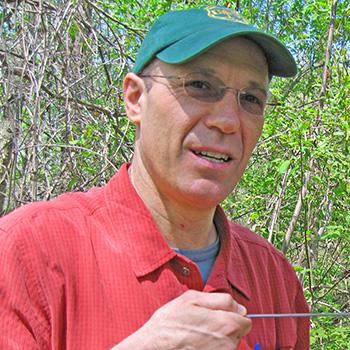- Ph.D. 1996 Botany, University of Vermont
- Teaching certificate 1989 Southern Connecticut State University
- M.S. 1985 Forestry, University of Vermont
- B.S. 1981 Forestry with a coordinate major in Environmental Studies, University of Vermont
BIO
I coordinated a diverse, collaborative group of scientists from the USDA Forest Service, University of Vermont, and other institutions that evaluate the influence of human-associated stress (e.g., pollution additions, climate change, etc.) on forest health and productivity. This research concentrated on the impacts of anthropogenic stress on aspects of tree physiology, including tissue cold tolerance, carbohydrate and nutrient relations, foliar pigments and antioxidant enzymes. Issues that I worked on include: red spruce winter injury and other aspects of conifer cold tolerance, sugar maple decline, the impacts of calcium depletion on tree health, the biological basis of red pigment expression in the fall, and cold tolerance as a limitation to American chestnut restoration in the north.
I am now retired and a Volunteer with the USDA Forest Service as I finalize my research projects.
Area(s) of expertise
Tree physiology, air pollution ecology, climate change, species restoration
Bio
I coordinated a diverse, collaborative group of scientists from the USDA Forest Service, University of Vermont, and other institutions that evaluate the influence of human-associated stress (e.g., pollution additions, climate change, etc.) on forest health and productivity. This research concentrated on the impacts of anthropogenic stress on aspects of tree physiology, including tissue cold tolerance, carbohydrate and nutrient relations, foliar pigments and antioxidant enzymes. Issues that I worked on include: red spruce winter injury and other aspects of conifer cold tolerance, sugar maple decline, the impacts of calcium depletion on tree health, the biological basis of red pigment expression in the fall, and cold tolerance as a limitation to American chestnut restoration in the north.
I am now retired and a Volunteer with the USDA Forest Service as I finalize my research projects.
Areas of Expertise
Tree physiology, air pollution ecology, climate change, species restoration
